Rockshelter: A "House" Built by Nature
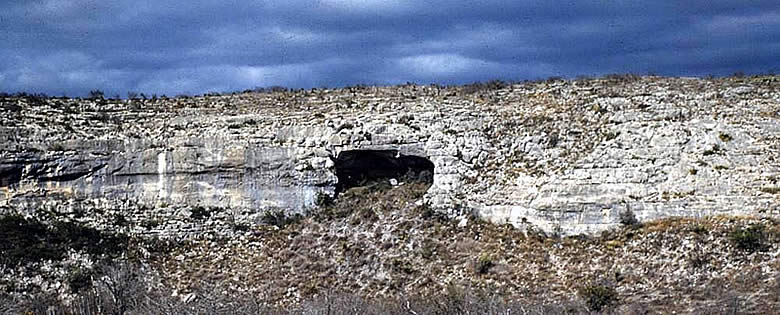
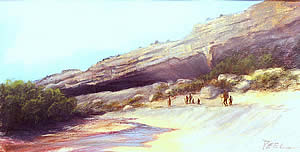
Rockshelters—large openings in canyon walls—may be the oldest "homes" used by people in North America. Carved by nature over thousands of years, rockshelters provided shade from the sun and protection from wind and rain. Some are very large and made very comfortable living spaces for prehistoric people—big rooms with a view!
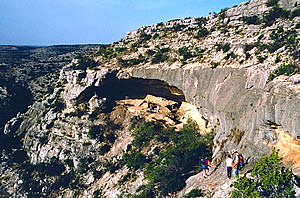
In the dry desert areas of southwest Texas, Indians lived in rockshelters for thousands of years before Spanish explorers arrived. The most comfortable shelters faced either east—away from the blistering afternoon sun—or south, away from the freezing north winds that sweep through in winter. Inside the shelter, the space was often divided into living areas, just like our homes today. Along the back walls, Indians often made sleeping areas, with beds of twigs and grass placed in shallow pits. There were hearths (small fires for cooking and warmth) throughout. There were even bathrooms near the edge of the shelter (although these were little more than pits in the ground.)
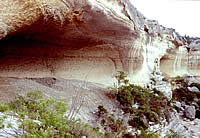
Rockshelters are a treasure trove for archeologists because there can be so much fascinating material to study. Over time, dry rockshelters slowly filled up with trash—both the stuff left by prehistoric campers as well as that left by "mother nature, such as dust and chunks of rock falling from the "roof" of the shelter.
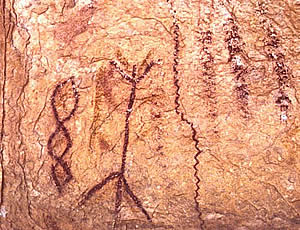
As for human trash, rockshelter-living people were "litterbugs!" They hauled in plants, tools, tool-making materials, containers, food, rocks, firewood, and more. Over time, some rockshelter deposits have grown to over 30 feet thick just during the time span that humans lived in the region (the last 13,000 years or so).
Along the riverbanks and beyond, people hunted deer and small game and collected seeds, nuts, and wild plants for food. Of particular importance were the thorny desert plants such as sotol, lechuguilla, and prickly pear cactus. These plants offered food, fiber for making cordage and baskets, and thorns for sewing and fishing.
